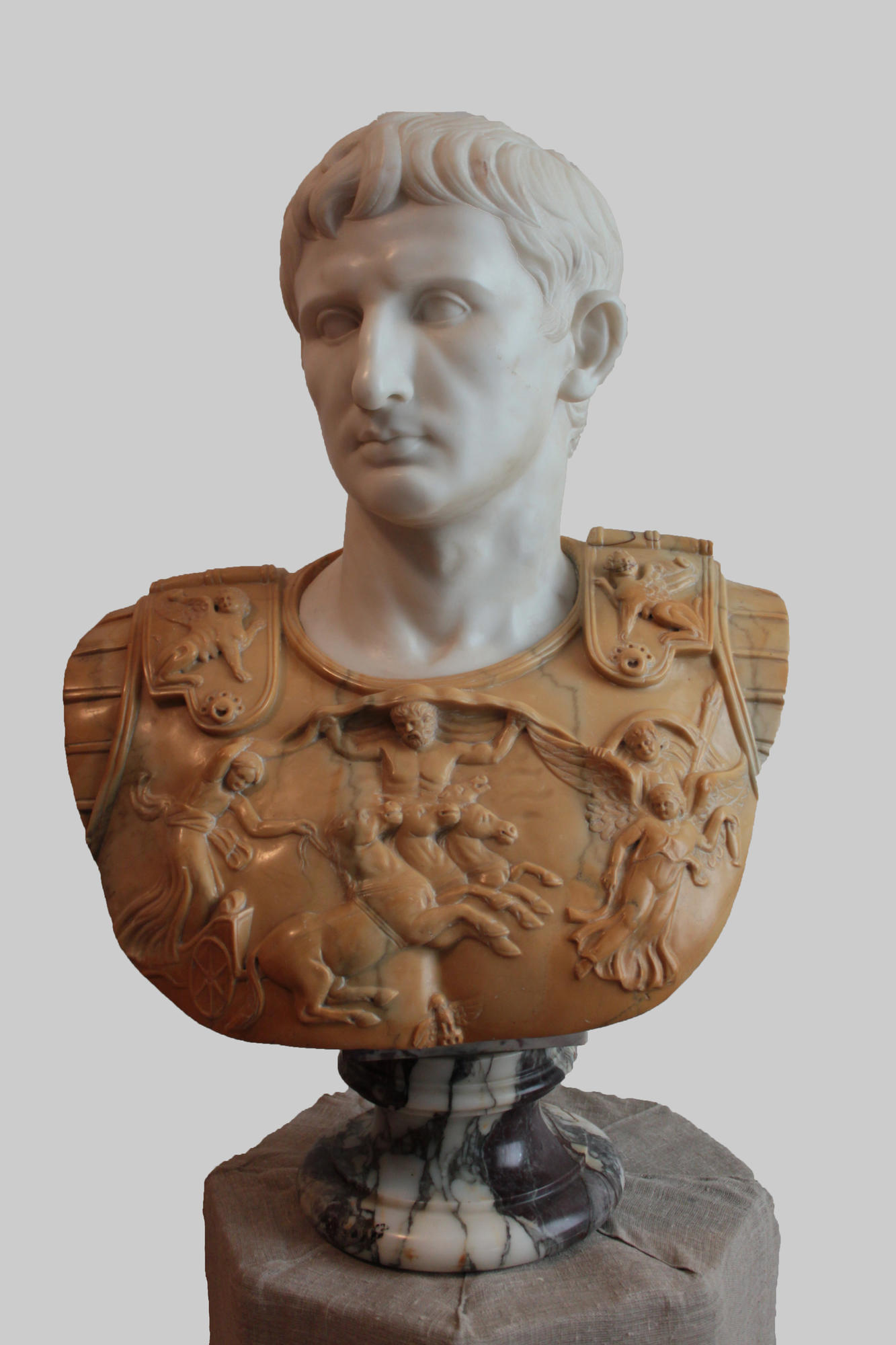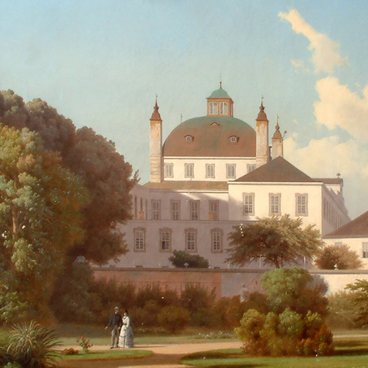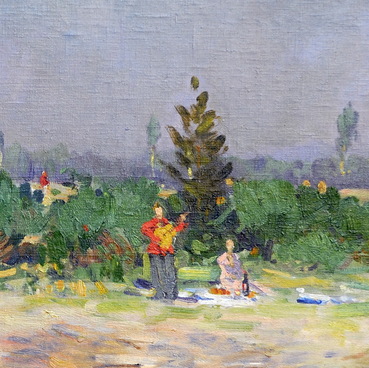The bust of the Roman Emperor Octavian Augustus from the collection of the Stavropol Krai Museum of Fine Arts is created by an unknown sculptor, it is a copy of a two-meter tall marble statue. It was found at the Villa Prima Porta, which belonged to the wife of Augustus, in the northern suburbs of Rome in 1863. In turn, the marble statue was copied from the bronze original, made in 20 BC. The find was dated back to the 1st century AD and today it is kept in the Vatican Chiaramonti Museum.
The almost high marble statue from Prima Porta is a masterfully executed idealized image of a young general with a classic beautiful face and athletic physique. The portrait features of Octavian Augustus are clearly recognizable. The sculptors emphasized the inner qualities of the emperor — inner strength, will, power, purposefulness and self-control. Such visual flawlessness should have led the audience to the idea of the divine origin of the Emperor. The statue is made in the technique of classical sculpture of the Polyclet’s school.
The unknown Italian sculptor of the 18th century followed exactly the marble antique, but copied it not completely. He chose the shape of the bust — the portrait bust as the main shape of the Etruscans was improved by the Romans and later became a tradition of all European art.
In his work, the sculptor used a combination of white marble and yellow and grey in the veins. This brought elegance and decorativeness to the image. Augustus' head is made in white. In the features of a face with tight lips and a quiet clear look the sculptor of the 18th century repeated the desire of the Roman master to heroize and glorify the “divine Augustus”.
The relief of the armour is made of yellow marble — in general, it is a story that asserts the greatness of the emperor. All the details of the composition are of Roman origin. On the relief, Jupiter on the chariot supports the canopy over the central allegorical scene, where the figures represent the subjugated provinces of Gaul and Spain. As the sculpture of Augustus in the museum version is a bust, it makes it possible to see only part of the relief.
The almost high marble statue from Prima Porta is a masterfully executed idealized image of a young general with a classic beautiful face and athletic physique. The portrait features of Octavian Augustus are clearly recognizable. The sculptors emphasized the inner qualities of the emperor — inner strength, will, power, purposefulness and self-control. Such visual flawlessness should have led the audience to the idea of the divine origin of the Emperor. The statue is made in the technique of classical sculpture of the Polyclet’s school.
The unknown Italian sculptor of the 18th century followed exactly the marble antique, but copied it not completely. He chose the shape of the bust — the portrait bust as the main shape of the Etruscans was improved by the Romans and later became a tradition of all European art.
In his work, the sculptor used a combination of white marble and yellow and grey in the veins. This brought elegance and decorativeness to the image. Augustus' head is made in white. In the features of a face with tight lips and a quiet clear look the sculptor of the 18th century repeated the desire of the Roman master to heroize and glorify the “divine Augustus”.
The relief of the armour is made of yellow marble — in general, it is a story that asserts the greatness of the emperor. All the details of the composition are of Roman origin. On the relief, Jupiter on the chariot supports the canopy over the central allegorical scene, where the figures represent the subjugated provinces of Gaul and Spain. As the sculpture of Augustus in the museum version is a bust, it makes it possible to see only part of the relief.



